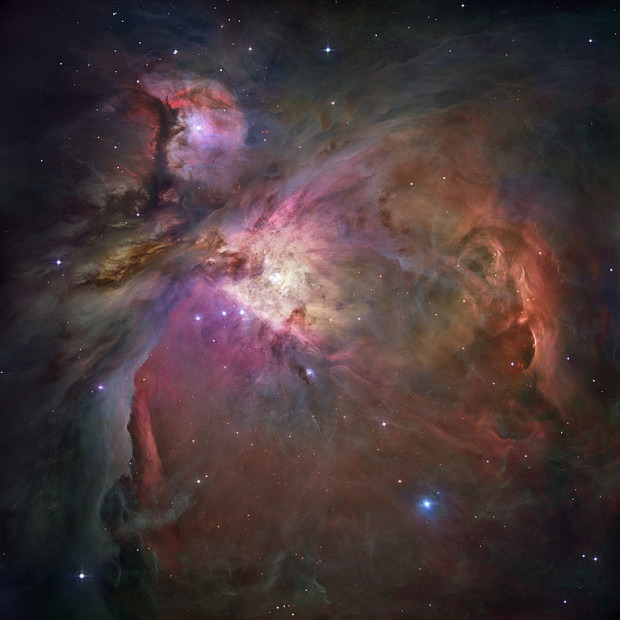Two Photos of the Orion Nebula Show Just How Far Photography Has Come
![]()
The saying goes, “your cell phone has more computing power than all of NASA in 1969. NASA launched a man to the moon. We launched a bird into pigs.”
Thankfully, in addition to launching furious balls of feathers into evil swine, we also use our phones for taking photographs. And just as our phones have more computing power than all of NASA in 1969, our phones also have better imaging capabilities than many of the astrophotography endeavors of the past.
Case in point is the above image featuring a comparison of two almost identical photos taken of the Orion Nebula, but done so over a century apart, with very different gear.
On the left you have the first photograph ever captured of the Orion Nebula. Taken in 1880 by physician and amateur astronomer Henry Draper. With complete access to an observatory and its accompanying tools, Draper used “an 11-inch Clark Brothers photographic refractor” to capture the image with an approximate exposure time of 51 minutes.
On the right you have an image taken in 2013 by Andrew Symes, an amateur astrophotographer. What did he use to capture his photograph over 130 years later? Nothing more than an iPhone and amateur telescope with an exposure time of approximately a second.

It’s no surprise technology moves fast, but realizing that with the phone in our pocket and a comparatively inexpensive telescope, we’re capable of capturing a more detailed and dynamic image than they were able to take from an observatory 130 years ago is nothing short of incredible.
We can’t help but agree with Imaging Resource when they say, “if Draper could see Symes’ work, he would surely be thrilled with it.” Imaging technology has come far, and it’s only the beginning.
If you’d like to see more of his work, Symes has an incredible collection of astrophotography over on his Flickr stream, so be sure to head over and take a look when you get a chance.
And since we’re on the subject, do you think we’ll see this kind of astronomical leap (pardon the pun) over the next 130 years? Will the Google Brain Implant with built-in telescope let you photograph the Orion Nebula the way Earth’s observatories see it today?
(via Canadian Astronomy via Imaging Resource)
Image credits: Photograph comparison by Canadian Astronomy, Orion Nebula by NASA/ESA